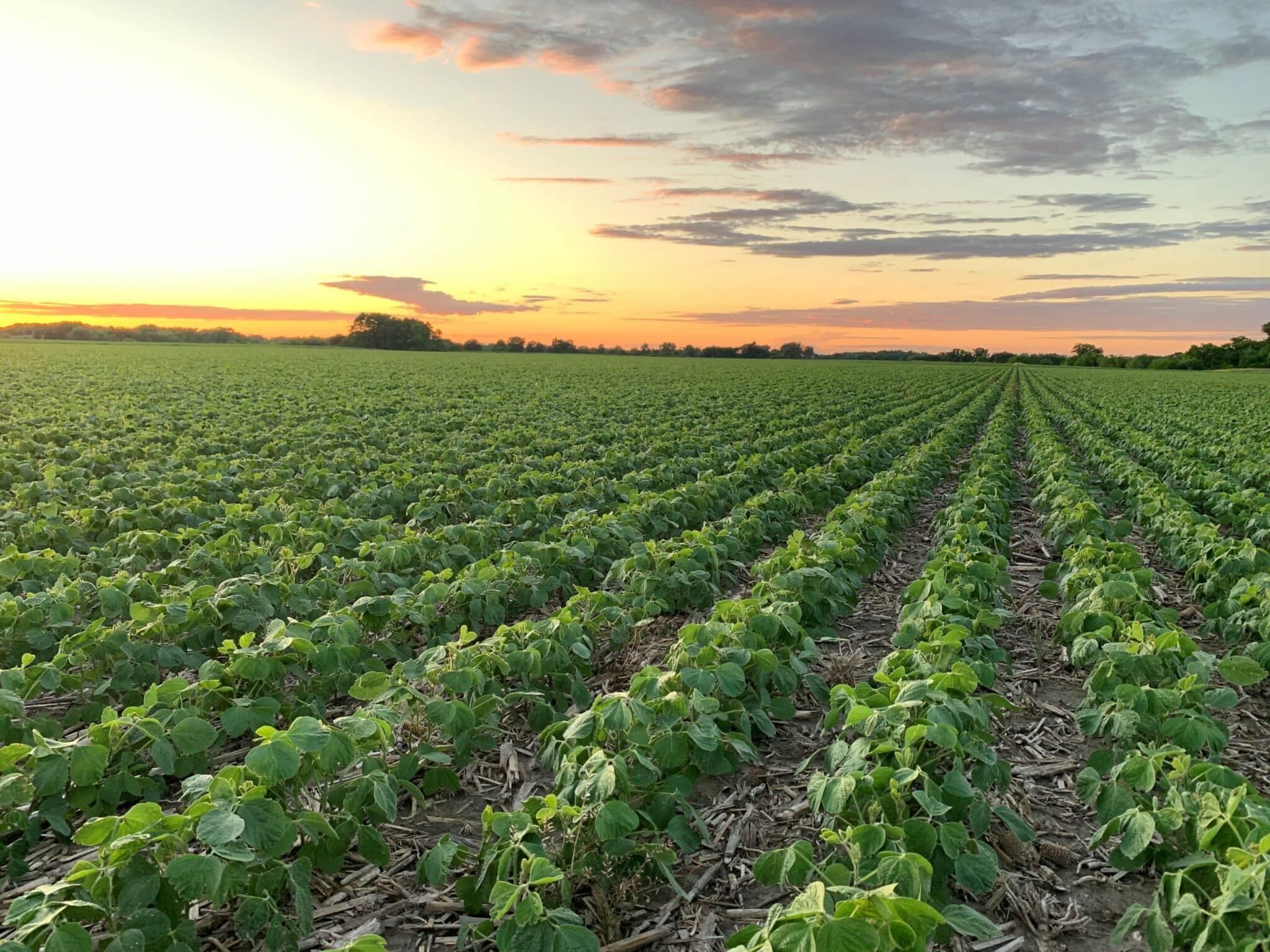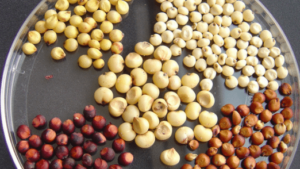Staying ahead of the market with soybeans.
With soybeans as one of the fastest growing crop systems, seed companies are investing in research and development while growers are tasked with making seed decisions. Trends, traits and treatments change yearly, and staying current is key to staying competitive on both sides of the market.
“It’s a critical aspect and growers only get one shot a year. We have to make sure we get it right,” says Ryan Fuller, soybean strategic marketing for Syngenta.
Now, data is collected on everything, from soil information to weather, even biotic and abiotic stress. Even more significant are the tools and capabilities to take that data and turn it into information that can drive the decision-making process.
“Over their career, there may be only 30 or 40 chances to get this right, and harnessing all that data and turning it into information has been one of the biggest changes that’s happened over the last five years,” Fuller says.
Speeding Up Success
Varieties are added each year to the list growers can choose from. New lines used to be in production for six to eight years, but that process has been cut in half.
Breeders have shortened production cycle times, producing multiple generations in a single year. Processes have shifted to be more efficient, starting with better predictive models and increased genetic understanding.
“Breeders are working with marker assisted breeding these days, so they understand exactly what the product is that we’re working with before they even start breeding,” says Mike Kavanaugh, director of product development for AgReliant Genetics.
And breeders are able to use molecular stacks, including Dicamba, Roundup and Liberty tolerance together, or 2,4-D, Liberty and Roundup tolerance, for example.
“You’ve got all these stacks going into a line, and basically all the traits are passed into that line at one time, versus multiple traits being passed through separately,” Kavanaugh says.
Precision Breeding
Precision breeding has been a game changer.
“It truly was a numbers game for a lot of years. The more lines you could screen, the more you could select,” Fuller says.
It’s possible to stack the odds by increasing the commercial probability early in the process.
“You’re starting with a smaller pool, but that pool has already been really selected down, and then you fine tune as you go through the development stages,” Fuller says.
Testing has also been fine-tuned for success; for example, by manually adding water to an already saturated field to test for Phytophthora root rot.
“We made a targeted effort to find locations to install certain capabilities, whether it’s the ability to irrigate or mist to create that perfect environment so that we can reliably screen our germplasm through the development pipeline, make early selections and characterize our varieties before we go out to the marketplace,” Fuller says.

For example, a test plot area might flood naturally once every five years. Increasing the overall number of locations and placing these screening trials in controlled environments ensures data is sufficient to provide accurate ratings.
“Most of what we would call challenges, or even failures, in the industry, were due to either inaccurate or inadequate disease screening,” Fuller says.
Kavanaugh also recognizes more robust testing and trials across North America.
“The testing models that we’re able to put in place today are amazing, not just from an infield aspect, but also just the data accumulation and evaluation aspect,” he says.
Breeders can compare single year data to historical averages, as well as find trends and comparisons across geographies.
“It’s not all about just what happened locally the previous year,” Kavanaugh says.
Yearly Yield Improvements
When looking to the future, it’s first important to consider just how far yields have come. From 1960 to 1990, yields went from 23.5 bushel per acre to 34.1. In 2021, the estimated yields were 50.6, according to Kurt Rahe, general sales manager, Burrus Seed.
“It’s really all about improved genetics, with multiple breeding programs in the industry, and how we can continue to see the growth of yield potential with each of these varieties as they get introduced,” Rahe says.
He says growers can expect about a half bushel increase on the newest varieties that are introduced annually, largely due to better disease tolerances to problems such as Phytopthora root rot, soybean cyst nematode, white mold, iron chlorosis, and other soybean challenges.
Rahe was involved in the introduction of Roundup Ready soybeans in 1997, which was a huge step forward for the industry.
“Growers were spending up to $80 an acre to control weeds. With the introduction of Roundup Ready soybeans, they were able to significantly reduce their costs of herbicides and have clean fields again instead of walking their fields in addition to the herbicides they were using,” he says.
New traits have been introduced, including triple stack soybean varieties that help growers to manage their weeds, fight off glyphosate resistant weeds and then also maximize their yields.
Soybean seed treatments are another tool in the growers toolbox to get soybeans off to a strong start.
Rahe estimates 80% of the soybeans planted today have a seed treatment on them.
“That can be a seed treatment of a fungicide only; it could be a fungicide with insecticide, or it could be a fungicide, insecticide and a nematicide,” he says.
Growers are also looking for the protection of Sudden Death Syndrome (SDS) in their soybeans, which can also be reduced with the use of a seed treatment.
Planting Preferences
Seed treatments also enable growers to plant soybean earlier than they have historically planted.
“It used to be growers would plant all of their corn and then switch their planter over to plant soybeans. Recently, we’ve seen where growers are planting soybeans about the same time or earlier as corn, depending upon their field conditions,” Rahe says.

It is important for growers to ask questions of their supplier to understand what protection they are getting out of their seed treatment. If growers choose to plant soybeans earlier, they should make sure they have protection from a multitude of early seedling diseases such as pythium, Phytopthora, rhizoctonia, and phomopsis.
“Some of the new technology that’s available out there, has enabled us to move planting date earlier, so that growers can capitalize on higher yields and higher performance,” Rahe says.
Frost is still a concern when planting throughout the Corn Belt in late March or early April.
“Whenever you plant earlier, you’ve got to watch for that late spring frost because it will kill soybeans if we get cold enough for long enough,” Kavanaugh says.
Different varieties are better suited to different planting times
“Growers have the ability to determine if they want a very fast emerging product or if they want something that is not as fast but that will come up as soil temperatures warm up,” Rahe says.
Many growers used to plant a bushel or a bushel and a half per acre. Now it’s closer to 130,000 to 140,000 seeds planted per acre in soybeans.
Kavanaugh says growers have had success with less than 120,000 seeds per acre.
“We have to remember that soybeans are a bush plant by nature and they want to express themselves,” he says.
Deciding with Data
With so many traits to consider, farmers must make a list of priorities.
“Everybody wants high yield, but are you willing to sacrifice some standability for that highest yielding variety?” Rahe asks.
Cost is, of course, an important consideration.
Rahe recommends growers should ask a lot of questions from their suppliers to understand what is included in their seed treatment because not all seed treatments are the same.
Rahe says all these questions add up to 40 or 50 decisions per year on a single crop, which can be overwhelming when trying to make sense of changing trends, market dynamics and variety selection.
“From a dealer-grower point of view, we have to make sure that the herbicide platform we use has an operational fit,” Kavanaugh says.
“We have to determine the weed spectrum, the herbicide application details around that and what the neighbor’s platform is as well,” he says.
Growers are following consumer leanings toward or against GM varieties, but Rahe says the market has stabilized over the last few years with only about 5-7% of the U.S. soybean acres planted to non-GMO soybeans.
Simple Strategies
As growers take advantage of the expanding soybean options, it is tempting to diversify too much, perhaps using a Dicamba/ Roundup scenario along with some Xtend Flex, for example.
“That’s fine. Just try to keep it simple,” Kavanaugh says.

He suggests separating those varieties and documenting them well.
“We see folks try to mix E3 and Xtend soybeans, and that can be very challenging,” Kavanaugh says.
Plus, having a simpler “Plan A” allows room for any “Plan B” situations that come up.
“Farmers are tasked with making hundreds of decisions annually; when they want to plant their crop, what fields they want to plant their crop, and so on, but they also have to create contingency plans,” Rahe says.¬†
In addition, Kavanaugh encourages growers to be aware of Dicamba label uncertainty and decisions made regarding the state 24(c)s.
“When those regulations come out, we have to understand what they are,” Kavanaugh says.
Supply issues need to be factored in as well.
“It looks like glyphosate inventories are getting pretty tight. So, make sure you’re working with your seed dealer and your chemical dealer when making your decisions so you know what the options for next year will be,” Kavanaugh says.
Focused for the Future
It’s tempting for growers to make decisions based solely on the prior year’s successes and failures, but it’s important to understand environmental impacts that might be unique to one season, rather than a new trend.
“Don’t give up on good varieties,” Kavanaugh says.
Moreover, with the increase in interest for soybeans, some growers are considering expanding their acreage next year. Kavanagh cautions growers to carefully think through field selection.
“Make sure you’re choosing soils that have low soybean cyst nematode pressure, adequate fertility levels as it pertains to phosphorus and potassium and especially respectable pH levels. Keeping your pH up and keeping a high calcium load in the soil is very important for rhizobium survival,” he says.
In many ways, the industry has started to treat soybeans more like corn, not just from a breeding aspect, but also a management aspect and production aspect as well.
“A grower may think that they can just get by with using the fertilizer that was left from corn, but that might be the old way of thinking. Now growers should put a plan together on figuring out their fertility strategy for each field.” Rahe says.
With these trends and advances, the industry is ready for soybeans to continue to grow.
“I think the next 10 years will be really interesting in this space,” Fuller says.
He mentions a lot of interest in fuel products as well as plant-based proteins.
“There’s opportunities that are going to be out there, whether it’s human consumption, renewable diesel or aquaculture as fish meal and things like that,” Fuller says.
Want to Read More? Check Out…
Staying Competitive in a Soybean Market – A Seed World Strategy Webinar & Podcast
Saving Corn from the Drought – A Seed World Strategy Webinar & Podcast













